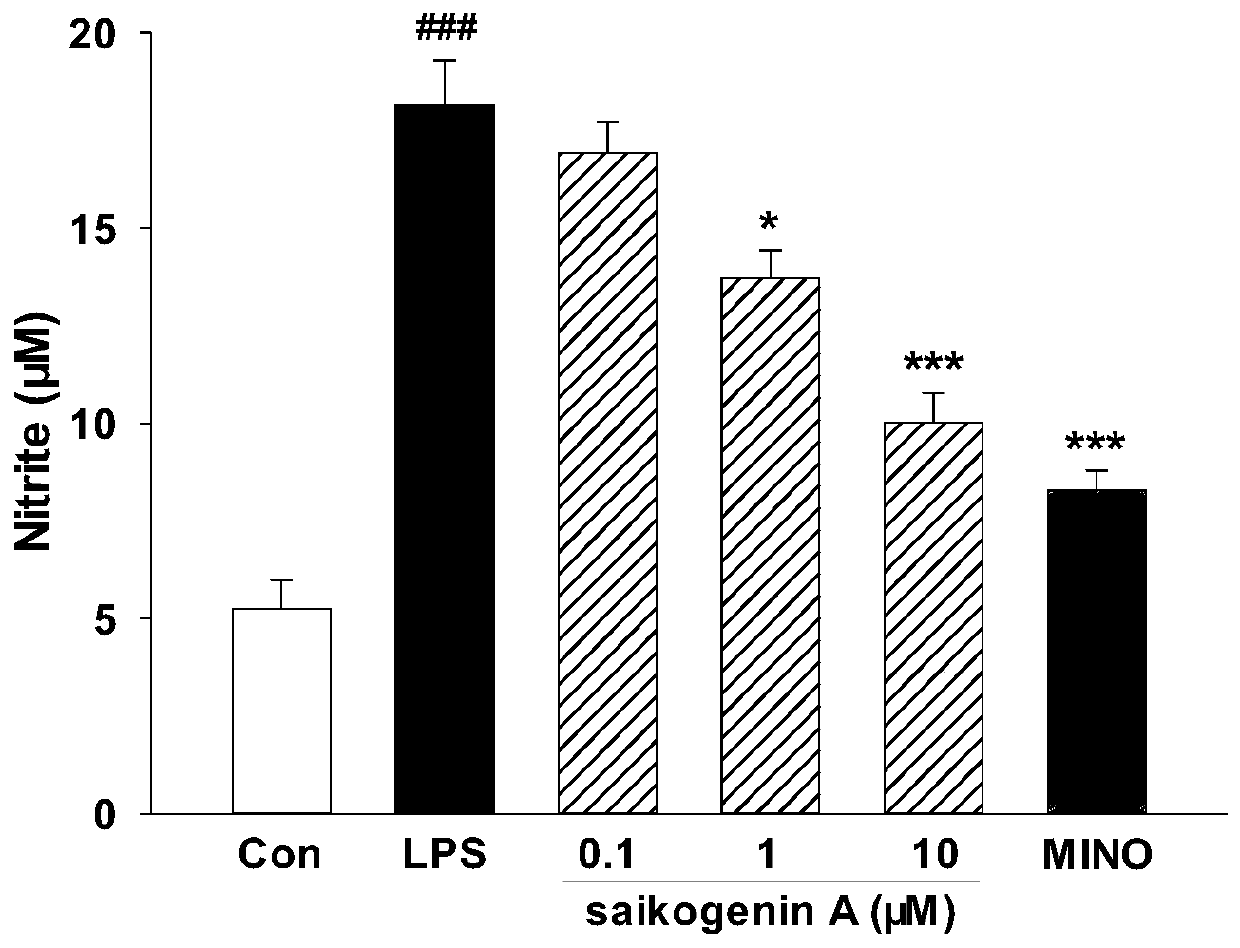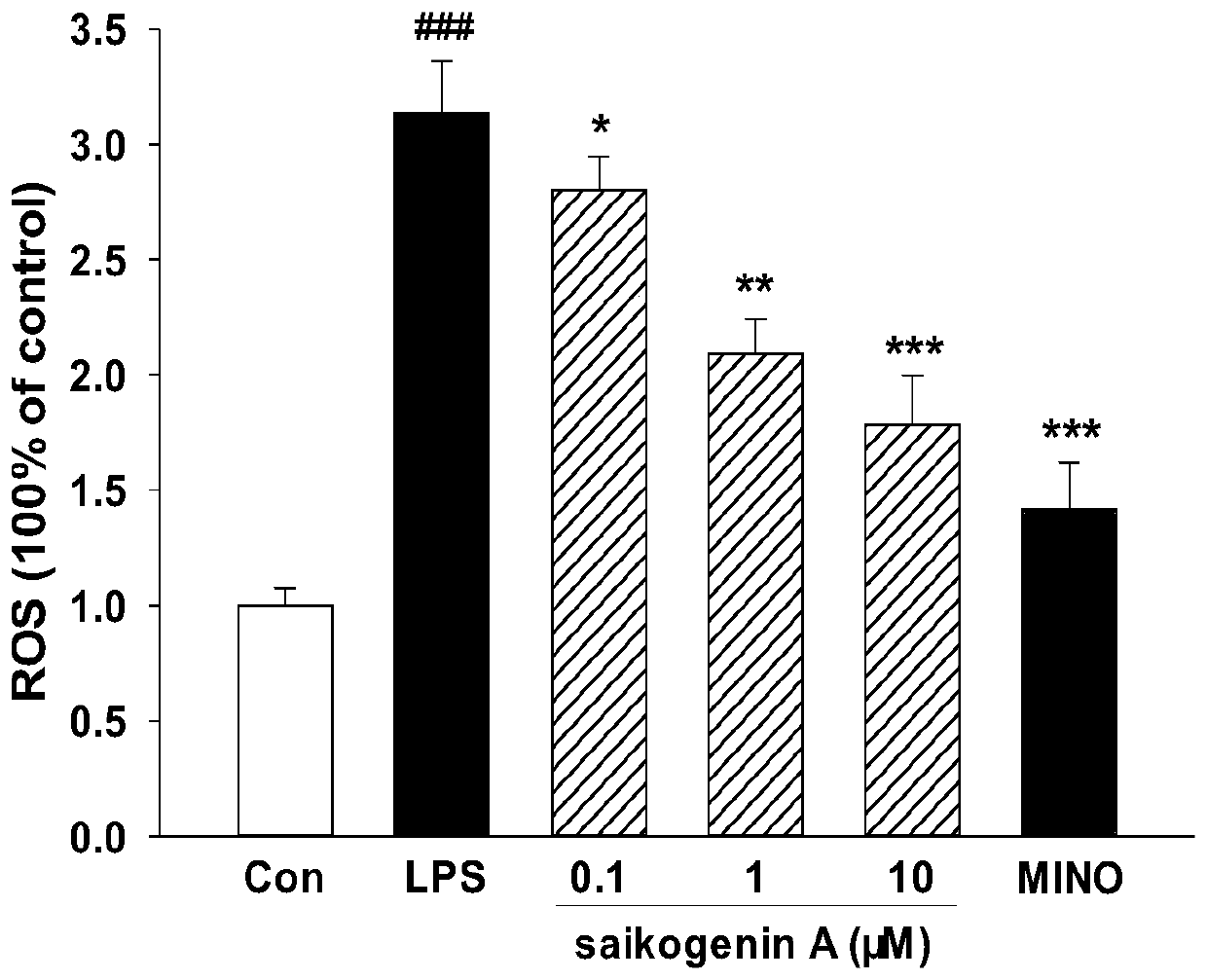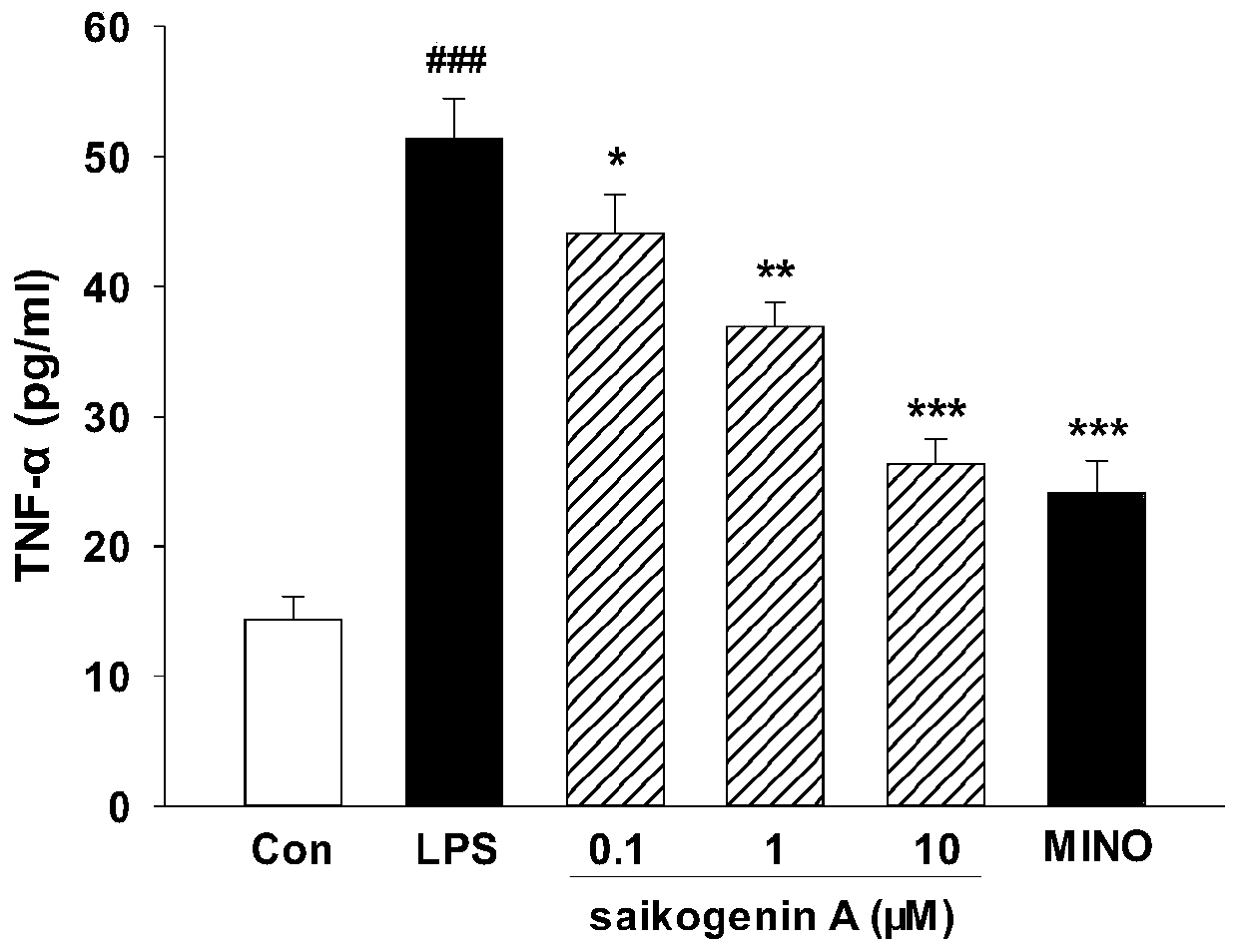Application of saikogenin A in treating neurodegeneration disorders
A degenerative disease and neurodegenerative technology, applied in the field of medicine, can solve the problems of complex pathogenesis of ND, special parts, lack of therapeutic drugs, etc.
- Summary
- Abstract
- Description
- Claims
- Application Information
AI Technical Summary
Problems solved by technology
Method used
Image
Examples
Embodiment 1
[0025] Example 1: The Griess colorimetric method was used to investigate the effect of saikosaponin A on LPS-induced NO release from microglial cells;
[0026] Cell line: mouse microglial cell line BV-2;
[0027] Drugs: LPS; saikosaponin A; minocycline (MINO).
[0028] method:
[0029] (1) Culture of mouse microglial cell line BV-2:
[0030] The cell culture solution was prepared based on DMEM medium, containing 10% FBS, 100 U penicillin and 100 U streptomycin, and 50 μM 2-mercaptoethanol (all final concentrations). Place BV-2 microglial cells in a cell culture incubator at a cell density of about 4×105 cells / ml at 5% CO2 and 37°C, and observe the growth of the cells regularly until the area of the cells adheres to the culture flask is about When the bottom area was 50-60%, the cells were digested with trypsin and passaged, and then continued to culture. Take 3-7 generations of cells for experiments.
[0031] (2) Determination of nitrite content:
[0032] Experimental ...
Embodiment 2
[0038] Example 2: The DCFH oxidation method was used to investigate the effect of saikogenin A on the release of ROS from microglial cells induced by LPS;
[0039] Cell line: mouse microglial cell line BV-2;
[0040] Drugs: LPS; saikosaponin A; MINO.
[0041]Detection method: Take BV-2 cells in the logarithmic growth phase, inoculate the cells in a 6-well plate with fresh serum-free DMEM medium, and the cell density is 3×10 5 cells / ml, inoculum volume 600μl / well, placed in an incubator at 37°C, 5% CO 2 cultivated under conditions. After the cells adhered to the wall for 3 hours, the culture solution was carefully sucked out, and according to the experimental group, the cells were replaced with different drugs prepared in serum-free DMEM culture solution to incubate the cells. At the same time, a blank control group was set up, and each group was set with 3 replicate wells, and the drug addition to the cells continued. After culturing for 2-4 hours, collect the supernatant, ...
Embodiment 3
[0045] Example 3: The ELISA method was used to investigate the effect of saikosapogenin A on the release of LPS-induced microglial tumor necrosis factor α (TNF-α) and interleukin 1β (IL-1β);
[0046] Cell line: mouse microglial cell line BV-2;
[0047] Drugs: LPS; saponin A; MINO.
[0048] Detection method: Take BV-2 cells in the logarithmic growth phase, inoculate the cells in a 6-well plate with fresh serum-free DMEM medium, and the cell density is 3×10 5 cells / ml, inoculum volume 600μl / well, placed in an incubator at 37°C, 5% CO 2 cultivated under conditions. After the cells adhered to the wall for 3 hours, the culture solution was carefully sucked out, and according to the experimental group, the cells were replaced with different drugs prepared in serum-free DMEM culture solution to incubate the cells. At the same time, a blank control group was set up, and each group was set with 3 replicate wells, and the drug addition to the cells continued. After culturing for 2-4 ...
PUM
 Login to View More
Login to View More Abstract
Description
Claims
Application Information
 Login to View More
Login to View More - R&D
- Intellectual Property
- Life Sciences
- Materials
- Tech Scout
- Unparalleled Data Quality
- Higher Quality Content
- 60% Fewer Hallucinations
Browse by: Latest US Patents, China's latest patents, Technical Efficacy Thesaurus, Application Domain, Technology Topic, Popular Technical Reports.
© 2025 PatSnap. All rights reserved.Legal|Privacy policy|Modern Slavery Act Transparency Statement|Sitemap|About US| Contact US: help@patsnap.com



